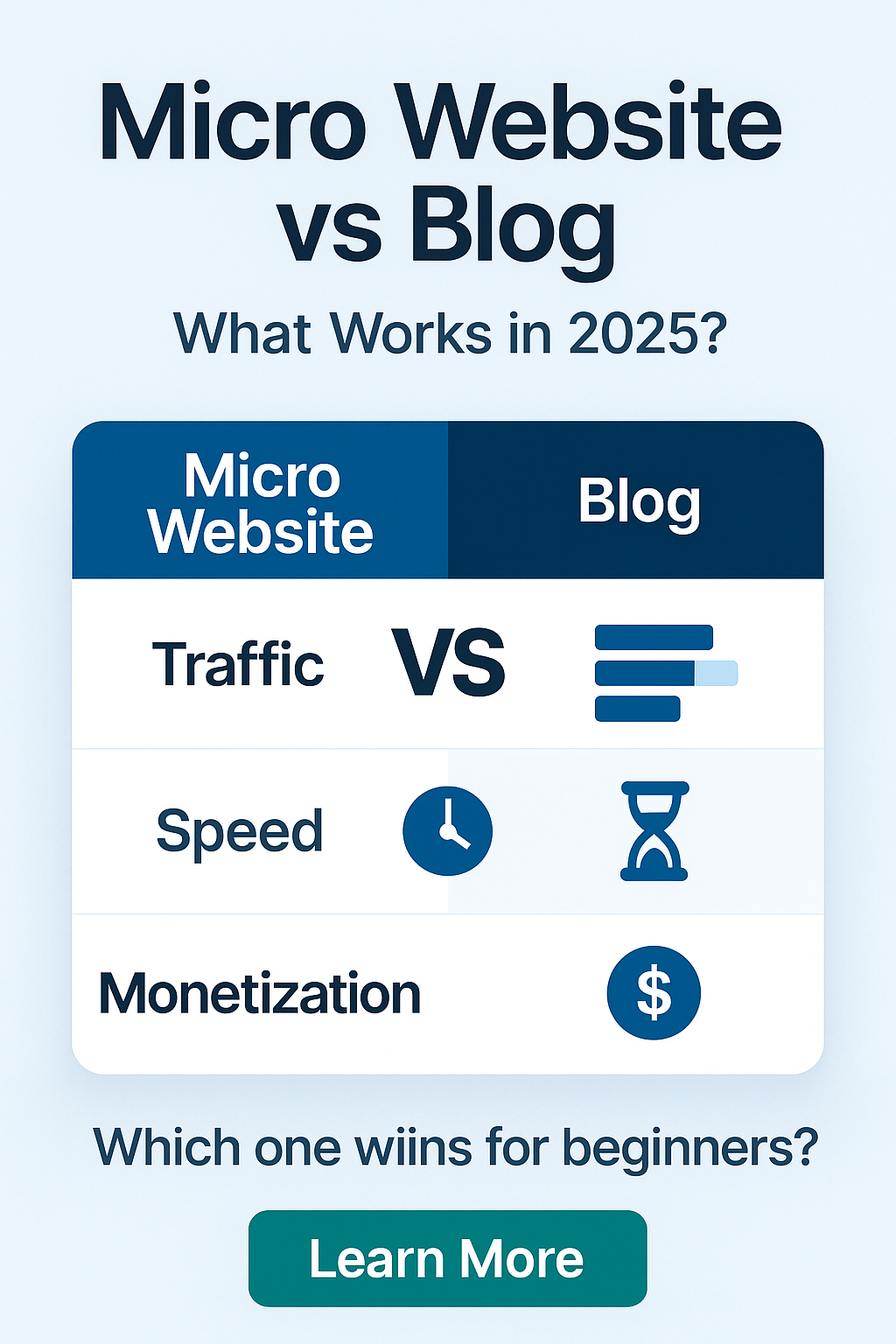
Micro Website vs Blog – What Works in 2025?
In this hands-on micro website vs blog comparison we cover time-to-rank, upkeep, and monetization trade-offs. If you’re a beginner, use this page to pick the model that fits your topic, budget, and timeline.
Micro websites win when your topic is tight, keywords show buyer intent, and you want results fast (≈ 5–20 pages). A blog suits broad topics, evergreen hubs, or news where you’ll publish weekly.
Reality check: if your niche genuinely needs 50+ pages of coverage, forcing a micro site can cap growth.
Micro Website vs Blog — Side-by-Side
| Criteria | Micro Website | Blog |
|---|---|---|
| Time to publish | Days (lean stack, 5–20 pages) | Months (ongoing cadence) |
| Time to rank | Fast on low-competition buyer intent | Slower; needs depth + interlinks |
| Maintenance | Low | Medium–High |
| Best for | “Best/VS/Under $” terms, templates, local offers | Evergreen hubs, news, broad categories |
| Monetization | Affiliates, simple products, lead capture | Affiliates, ads, newsletter, services |
| Scalability | Spin up multiple sites | Grow one brand domain |
When to choose a micro website
- You can group 5–20 pages around buyer-intent queries (“best”, “vs”, “under $”, “template”).
- You want quick tests and fast SEO feedback loops.
- You prefer a lightweight stack and minimal upkeep.
Internal links to ship next: Start Guide, Build a Micro Website in 7 Days.
When a blog beats a micro website
- Your topic is broad and needs continuous coverage (news, many subtopics).
- You plan to build a brand + email list and publish weekly.
- Ads + evergreen content are your primary monetization.
Primer on structure & depth: Guide to Micro Websites.
- Can 5–20 pages satisfy the intent? Yes → start with a micro site.
- Need ongoing coverage and categories? Yes → start as a blog or hybrid.
- Unsure? Launch a micro site as a test → if traction, expand to a hub.
Validate one niche with a micro website, then either expand the winner into a larger hub—or spin up a second micro site to diversify.
Follow:
